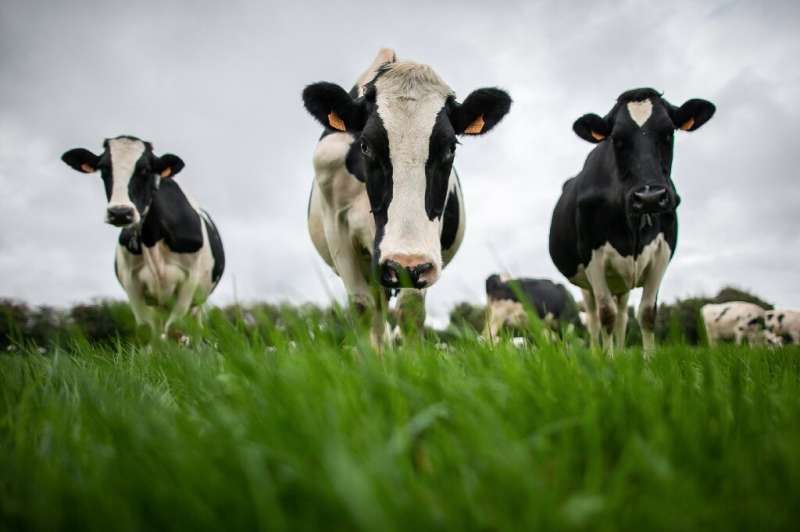Researchers say may have found cause of mad cow disease

Researchers said Wednesday they believe they may have found the cause of mad cow disease, while stressing the need to maintain precautionary measures to avoid a potential re-emergence of the illness.
Several hypotheses have been put forward over the cause of bovine spongiform encephalopathy, a neurodegenerative disease dubbed "mad cow disease" when it first appeared in the 1980s in the United Kingdom.
However, to date none has been verified as accurate.
The illness belongs to a family of ailments involving misfolding proteins known as prions which exist in other diseases such as scrapie in sheep as well as Creutzfeldt-Jakob disease which affects humans.
Researchers injected a particular scrapie variant into mice, producing the prion of bovine origin following genetic manipulation.
This allowed them to show not only that the illness had the ability to jump from one species to another but that the transmuted mice developed mad cow disease, according to an article in US scientific review PNAS.
The genetically modified mice are "a very good model, which works well in terms of knowing what would happen if one exposed cows to those prions," Olivier Andreoletti, a researcher with the French National Institute for Agronomic Research (INRA), which led up the study, told AFP.
"These results are explained by the presence of quantities of classic mad cow disease" which are present in natural form in the scrapie variant prions injected, INRA stated.
"For the first time, these data bring an experimentally underpinned explanation to the appearance" of mad cow disease in the UK in the 1980s.
The disease then spread in cattle across "Europe, North America and numerous other countries," the process aided by their consumption of foodstuffs including cereals and giblets from carcasses and animals hit by the ailment.
Contact with products from cattle so infected led to humans becoming infected with the disease, a variant of Creutzfeldt-Jakob.
From the 1990s, Europe introduced a slew of measures to counter the spread of the illness including banning animal cereals, tougher surveillance of cross-contaminations and destruction of the highest risk tissues, thereby eventually bringing the spread under control.
"These measures are still in place—but they are very expensive, leading in some quarters to calls for their elimination and "to resume recycling of good quality proteins" rather than throwing them away in what might be an alternative to soya imports, Andreoletti observed.
He added, however, that any recourse to "non-virtous practices" risked seeing the disease reemerge.
More information: Alvina Huor et al. The emergence of classical BSE from atypical/Nor98 scrapie, Proceedings of the National Academy of Sciences (2019). DOI: 10.1073/pnas.1915737116
Journal information: Proceedings of the National Academy of Sciences
© 2019 AFP




















